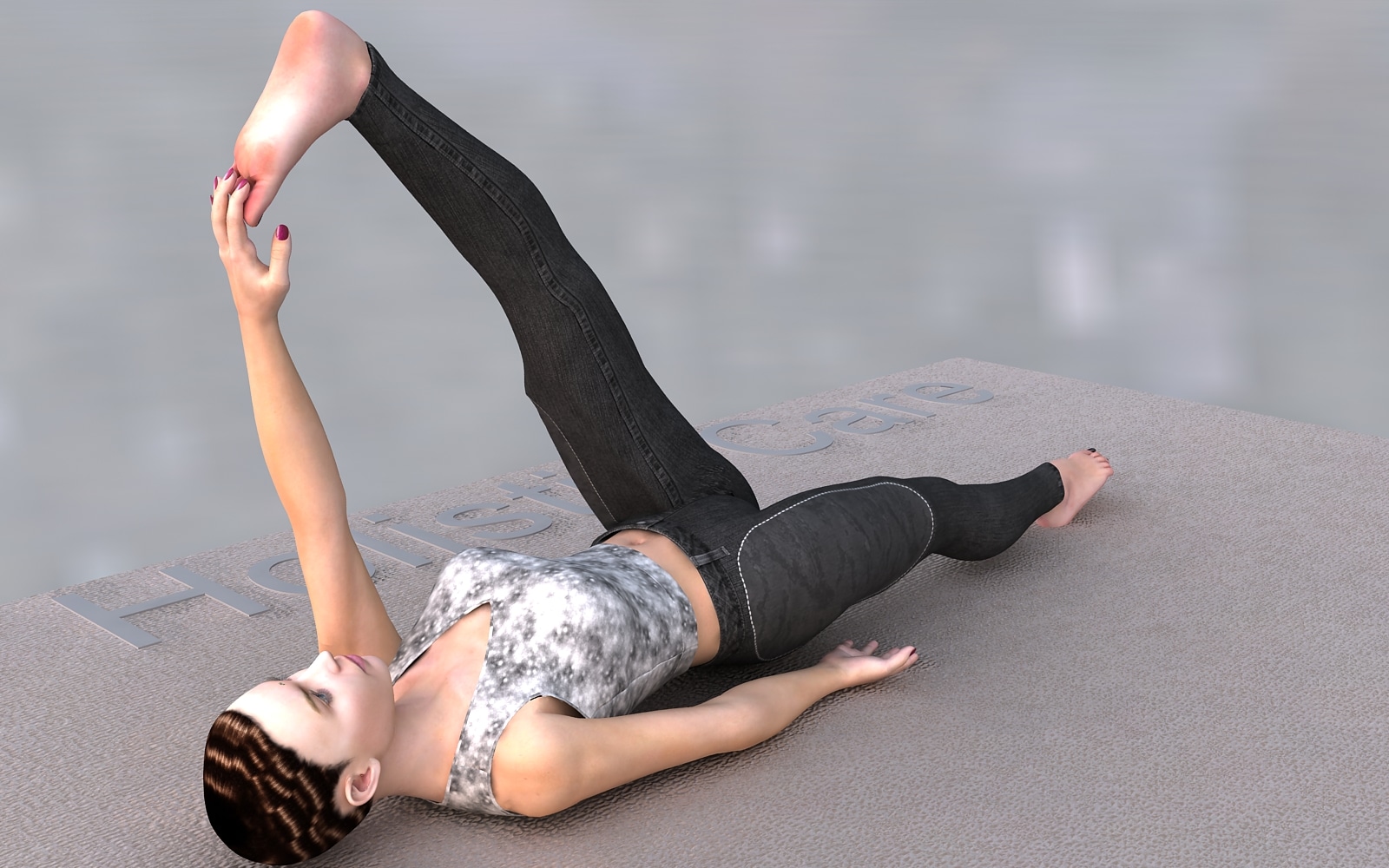Many sports and work arrangements can create an imbalance in the body through posture, often leading to a shortening of some muscles. This can end up reducing the anatomical mechanics and dynamics throughout our whole body.
A sore back, a sprained ankle, muscle cramps, pain in the shoulders or neck may be just some results of an imbalance in your training or daily movement routine, particularly when we hike for numerous hours with a, possibly, heavy backpack.
After sound cardiovascular health and fitness, mobility, flexibility and strength are the physical essentials for the success of many and prolonged hiking experiences.
As a yoga teacher I see misalignments and reduced focus on some of the most important muscle groups and I am enthused to be sharing my observations with you in a series of stretching and strengthening suggestions to help you to be physically and mechanically balanced.
Please note that abilities and mechanics vary person to person. Without seeing and interacting with your movement, I can only give a general guide to misalignments.
In preparation for a trek, the first of a series recommendations I have for you is ensuring you lengthen/stretch your achilles and hamstrings.
The hamstrings are long and strong muscles in the back of your legs and are connected to your hip and lower back which can, when tight, tilt the pelvis posteriorly – resulting in reduced lumbar curve or flat back. This may lead to postural misalignment all the way to shoulders, head and neck. A long walk, especially with weight on the shoulders and spine can result in bulged discs, pinched nerves or worse.
There are many and easy ways to lengthen your hamstrings. Bending over and touching your toes, when performed right, can be beneficial for the length of your hamstrings.
To self-assess your hamstrings, try this:
- Lay flat on your back and bring your hands under your lumbar curve. This is your natural curve of the spine while supported.
- Notice how it naturally changes when you lift one leg off the ground (which is, more or less, simulating you walking – just laying flat).
- Keep your leg lifted. Now, posteriorly tilt your pelvis and return to the lumbar’s natural and healthy position.
- With your core engaged slowly lift your other leg and continue to lift both of your legs, fully extended towards a 90 degree angle without losing the natural curve of the spine.
- If you lose the natural curve of the spine before you reach a 90 degree angle, you are very likely to have tight hamstrings.
If you do, there is no reason to be alarmed! There are many safe and easy-to-perform stretches you can do at home.
In order to start to lengthen your hamstrings, perform the following exercises (daily) for a minimum of 30 seconds each side.
You may be surprised how efficiently your body will respond when you start a safe and continuous stretching routine. Make sure you have moved (warmed your muscles) before performing this stretch.
I also suggest you are hydrated adequately and breathe through your nose and into your belly. If you can envision it – even into your hamstrings!
This particular yoga stretch is called Supta Padangustasana A. It is an intense stretch of your hamstrings, involving your gluteus maximus and is performed in two stages.
Stage 1.
- Lie flat on your back on the floor or a mat.
- Stretch both legs out and keep the quadriceps engaged i. e. lifting your kneecaps. Bend your left knee and loop your belt on the sole of your foot.
- Flex your foot towards you so the heel of the foot is higher than the toes.
- Extend your leg and work it perpendicular to the floor engaging again through your quads.
- Have your shoulders on the ground and the tension on the belt be just enough to create a notable but not painful, tension at your hamstrings.
- Keep your right leg stretched fully on the floor and rest your right-hand on the right hip to support stability.
- Stay here for 10 breaths.
- Repeat on the Other side or advance to the next pose.
Advance to…
Stage 2.
- Raise your head and torso from the floor bend the left arm at the elbow and pull your left leg towards the head keeping leg straight.
- Pull your leg down lift the head and torso up, so that eventually your chin and the left knee could meet.
- Stay in this position for about 5 breaths keeping your right leg fully stretched and your hips evenly on the floor to finish move your head and torso back to the floor and release your left leg.
- Repeat on the other side.
A study by J.Yimen et al found that, after a four week stretching program at home, straight leg raise angle increased by 25%. (+) Participants in his study were men in their 20’s who stretched their hamstrings in standing for 30 seconds, 6 repetitions, once a day.
So why not give this one a try?! It’s never too late to reach your toes 😉
This is just one example of very common, but also quite complex misalignments, which many of us share. Be aware that possible misalignments are as vast as individuals are on this planet.
To ensure a safe and balanced training and stretching regime that addresses your specific needs, find a professional who watches you while you train and/or stretch.
It happens so often that our perceptions cheats us and we train less effective as we can.
Feel free to contact me via Getaway Trekking for any questions and further information.
+. Jari Ylinen, MD, PhD, Tuomas Kankainen, PT, Hannu Kautiainen, BA, Asghar Rezasoltani, PhD, Tiina Kuukkanen, PhD and Arja Häkkinen, PhD Effect of stretching on hamstring muscle compliance. J Rehabil Med 2009; 41: 80–84

